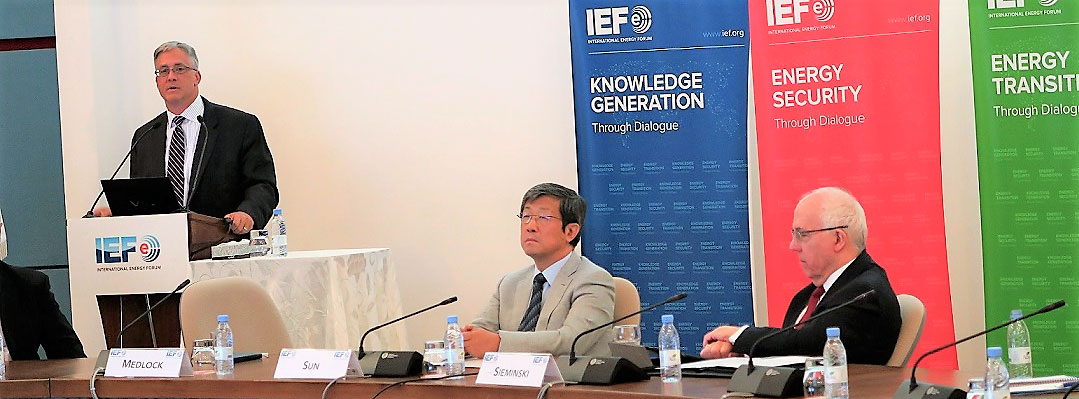IEF Lecture: Prospects for US Oil and Gas Exports
Riyadh, Saudi Arabia
The Secretary General of the International Energy Forum, Dr Sun Xiansheng and the President of the King Abdullah Petroleum Studies and Research Centre, Mr Adam Sieminski jointly hosted Dr Kenneth B Medlock III, Senior Director of the Center for Energy Studies at Rice University’s Baker Institute to present on the prospects for US oil and gas exports at the IEF on 18 July 2018.
US oil and gas exports have grown substantially and are making landfall in a growing number of countries. This is influencing current market dynamics and will continue to reshape global oil and gas trade. Following the oil market downturn in late 2014, unconventional US oil and gas production has become more resilient due to cost reductions and operator innovation. By 2017, US crude oil and petroleum products exports reached 6.3 million barrels per day while natural gas exports reached 8.7 billion cubic feet per day. Infrastructure and environmental considerations, however, present a potential, albeit temporary, drag on US exports’ stellar rise. Infrastructure constraints are limiting evacuation options and natural gas flaring exemptions for crude oil-directed developments are likely to lapse. The combined effect will be that some production may be shut in or take longer to materialise.
US oil production increased by over 5.5 mb/d over the past decade, covering for production declines that resulted from above-ground constraints elsewhere. Although shale production dipped in 2015, it has recovered since due to productivity improvements and higher prices. Nevertheless, both near-term global market balance and US exports will depend largely on global demand. US exports will be driven by profitability because development is driven by commercial considerations; US oil and gas are not an overt policy vector. Hence, international trade opportunities and the ability to overcome hurdles related to cost and market access through innovation and new infrastructure will drive exports in the long term. This will contribute to an ongoing transformation of global oil and gas trade, along with frontier supplies in the Western Hemisphere – including in several countries ranging from Canada to Argentina.
US shale has made global supply more price responsive. But, while shale can temper long term price movement it remains governed by market fundamentals. So, US shale will lend to greater long term price stability, but the role of inventory and spare capacity as a stabilizing force for short term disturbances in the global market is not diminished. Moreover, given that oil and gas demand will be largely driven by non-OECD markets for the next couple of decades, the importance of traditional sources of supply remains significant.
Key Links
- Center for Energy Studies at the Baker Institute for Public Policy of Rice University
- King Abdullah Petroleum Studies and Research Center






